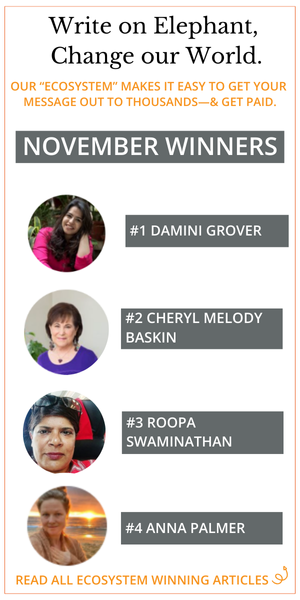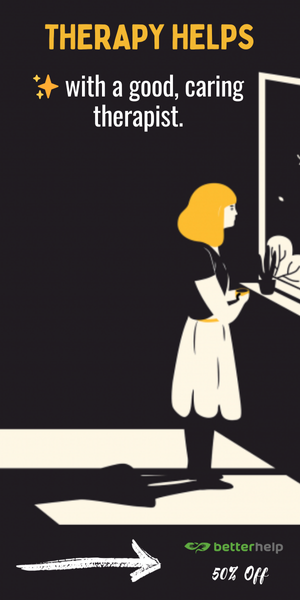“It is going to be okay. Just give it time.”
These words are pretty familiar to most of us.
They might even elicit a tight knot in our guts if we’ve heard them lately—because we usually hear these words after a loss .
I have been hearing them a lot in the last few days. The person I considered to be the love of my life and I have parted ways—unpleasantly. It was an explosive end that I learnt a lot from.
I have been scared of my shadow side for a while.
As a teenager I suffered with a huge amount of anger from childhood hurt. My anger was uncontrollable and explosive.
For the last 10 years, I have been practising yoga and meditation. I’ve sat through three 10-day silent retreats, meditating 10 hours a day to try and “get rid of” any anger within (which is a clue to where I went astray). I practice yoga or meditation every day for around an hour.
I have broken myself down piece by piece trying to cleanse these unwanted emotions from my system.
Indeed, it has helped profoundly. I have forgiven many people from my past, including myself. I am much calmer in general and less impulsive.
But I’m here to say that it is a mistake to repress or deny any kind of emotion. That it’s okay to be angry, it is okay to be sad, it is okay to be scared. It’s okay to not be okay.
As a yoga teacher, I have been focusing on love and compassion meditations for the last year. Beautiful as these may be, I suppose in the process I had forgotten that we have other innate emotions that are a part of us. Emotions which aren’t usually viewed by society in such a warm light.
Here’s where so many of us lose the plot. We think that by focusing only on the positive, we’re doing ourselves (and maybe others) good. We think this is what we need to do on the spiritual path, right? Wrong. Let me tell you, my shadow side really bit me in the butt because of this.
I had been preoccupied with controlling my mind since those years out of a fear of what was within me.
I was misled in thinking that I had gotten rid of my shadow side—it had disappeared.
According to the psychologist Carl Jung, the Shadow Self is an archetype that forms part of the unconscious mind and is composed of repressed ideas, impulses, instincts, desires and fears. This archetype is often described as the darker side of our being—representing chaos and the unknown. Jung believed that these hidden dispositions are present in all of us.
One of my shadow sides is anger.
As I’ve been into heart meditations, when anger has come up, I have denied it and told myself that I am so “in my heart chakra” that I can’t possibly be angry.
From an ego point of view, it is much nicer to believe I am a yoga teacher who only feels love and can shine light at all times.
According to Jung this belief is my “persona.”
The “persona” is what we would like to be and how we wish to be seen by the world. The word “persona” is derived from a Latin word that literally means “mask.”
My biggest mask is that of the calm, wise and equanimous yoga teacher, whose feathers can never be ruffled.
This is a mistake so many of us make on a spiritual path, especially teachers. The ego is a sneaky creature and can hide in many forms. Some of the biggest egos I have encountered have been those of spiritual practitioners.
I hadn’t realized that my ego loves to believe of “never feeling anger.” That when my girlfriend felt angry I would tell her to do a heart meditation. That my ego loves to believe that I can stay calm at any time as I “just don’t get angry.”
Well, I know now this wasn’t true. I had felt anger. I had felt frustration in my relationship.
All my denial and repression caused these feelings to boil over in me a few days ago, culminating in an uncontrollable tirade at my then partner.
This is why it is so important to befriend our shadow side. Befriend it and see what it is telling us. These so-called “darker” emotions are a part of all of us. Anger, for example, is a key emotion in our lives, especially in survival.
Even someone as practised as the Dalai Lama will probably still encounter the emotion of anger arising. It is an innate human emotion. However, from his years of meditation and daily practice, he would be able to deal with it better.
When we practice mindfulness meditation, we are literally pumping up the front part of the brain. This is the decision making part and is called the prefrontal cortex. When emotions arise in our day to day lives it’s easy to let these emotions take over and control our actions and reactions.
When we practice mindfulness meditation, we can start to notice the emotions arise. If I feel angry I try to notice my muscles tightening or heat arising in my body. I then allow the emotions to come up, without judging them or suppressing them. By doing this, they are then released from the body in a mindful, more controlled way.
Suppressing these unwanted emotions takes a lot of physical energy and can end up in a huge uncontrolled emotional explosion. By practicing mindfulness meditation, we start to realize our emotions don’t define who we are. They are just signals from the body that come up, and then pass. They are valuable messengers and we should listen to them without letting them overwhelm us.
This is not a quick fix. It is a discipline of patience. When I have a regular mindfulness practice, I notice huge changes in my life.
Tips to befriend our shadow side:
1. Know that there are no bad emotions.
Anger is okay. Sadness is okay and, guess what, so is fear. We need to accept all of our facets in order to evolve beyond them.
2. No one can make us feel anything.
If I feel angry, why do I feel angry? What need in me isn’t being met? No one can make us feel any particular way. They can only provide a stimulus.
This is both a scary and extremely empowering thought. We are always responsible for how we feel.
If I am walking through a forest and I see a piece of rope but I believe it to be a a snake, then the chemicals of fear will arise. They will however pass from my system after 15-90 seconds. This means that if I spend the day thinking about “what if’s” and remaining fearful then its ultimately my choice.
To help us realize this, we need to work on building up the decision-making part of the brain through a mindfulness practice.
3. Start practicing mindfulness meditation.
Mindfulness is often defined as putting our attention on a particular stimulus in a focused non-judgmental way.
My advice is to try and sit once a day for 10 minutes. (Less can work too.) If you feel more comfortable then after a while feel free to increase this time.
This is one way you can meditate:
Sit in a comfortable position. Any comfortable upright position is fine.
Then when you feel comfortable close your eyes.
Start to hear the sounds around you.
Feel the sensation of air on your skin.
Start to expand this awareness into your body.
Feel your feet on the floor. The position of your hands. The weight of your body on your sitting bones. Notice the position of your head. Soften in your jaw, your lips your tongue.
Start to become aware of your breath. Just noticing your breath as it is in this moment. If it’s soft, it’s soft. If it’s heavy, it’s heavy.
Maybe you can feel the air coming into the nostrils. Or your chest or abdomen rise and fall, just noticing, without changing.
Whenever your mind wanders, bring it back to the breath in a non-judgmental way.
Watch any thoughts, emotions and images that come up like passing clouds in the sky.
Keep staying with your breath.
The mind will wander and that’s okay. Stay with your breath. Observing your breath as it is.
Continue doing this for the time you have decided on. After you have finished slowly start to come back to the body, noticing the effects of this meditation on the body and overall.
After a few minutes gently open your eyes.
Please know that there are hundreds of studies on the effects of meditation on the brain. It works. It is, however, not a quick fix. The brain is constantly changing and evolving and adapting. If we meditate for a week, a month or a year and then stop, the benefits will not last forever.
Try and take a few minutes every day to sit in quietness.
~
Author: Luke Bache
Image: @elephantjournal on Instagram
Editors: Khara-Jade Warren; Ashleigh Hitchcock
~


 Share on bsky
Share on bsky




Read 0 comments and reply